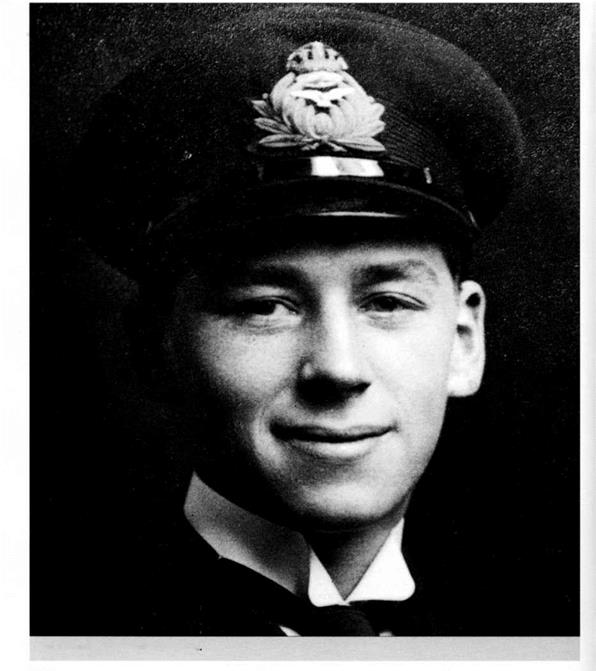Postscript
An interesting statement was made by Roy Brown between 1927 and 1930 at which time he vas being badgered by various parties and * tions to explain gaps, oxymorons and plain "possibilities in stories on von Richthofen’s demise. Some of these had been presented in.:ch a manner as to suggest that they were his vn personal memoirs. Brown could not have en very happy for some people were calling :m a liar and others a murderer. A few words ould have cleared it all up.
Triggered by the furore which resulted from the publication of The Red Knight of Germany and Fight with Richthofen, the Australian ex – .-vicemens magazine Reveille had been featuring,‘ters on the events of 21 April 1918. Apparently, the hope of straightening things out, the editor rote to Roy Brown asking what had happened. F r certain, without entering the contentious area, Brown could easily have settled the questions as to iere and at what height he had attacked von Richthofen. Brown’s reply, printed in November •30, was as follows:
As far as I am concerned. I knew in my own mind what happened, and the war being over, the job being done, there is nothing to be gained by arguing back and forth as to who did this and who did that. The main point is that, from the stand-point of the troops in the war, we gained our objectives.
An answer that seems to miss the point of the …estion may do no more than disappoint the recipient, but when the non-answer to Reveille is Liken together with the earlier non-answer to C EW Bean: ‘I cannot comment as I am not a reader »f that magazine,’ the repeat event and the careful phrasing of both raise suspicion that the evasion is not exactly accidental.
In 1935 Wing Commander H N Wrigley DFC AFC RAAF, in his book I be Battle Below (The History of 3 AFC Squadron) (published by Errol G Knox, Sydney) and at the time Director of Organisation and Staff Duties with the RAAF, lifted the curtain a little. He revealed that it was not only C EW Bean who had changed his mind after hearing evidence from people who had not been directly involved but who had a very good view of the proceedings. Major D V J Blake and Captain E G Knox MBE (the publisher, and a journalist), who had respectively been the CO and the RO of 3 AFC Squadron, had also changed their minds. The key passage follows:
Major Blake also states that he made many enquiries from ground eye-witnesses of the combat and crash, including Brigadier-General J H Cannan CB. of the 11th Australian Infantry Brigade, near whose headquarters Richthofen was shot down, and is personally satisfied that Richthofen was brought down by fire from the ground.
Captain Knox, who was also present at the medical examination and some of the subsequent enquiries, supports Major Blake’s statements.
The curtain was completely raised and the picture revealed in 1968. Seventy years after the death of Manfred Albrecht von Richthofen, historian Frank McGuire received a letter from Air Vice – Marshal J L Barker СВ CBE DFC BA, dated 12 October 1988. When the excerpt which follows is compared with Mellersh’s own lecture at the RAF Staff College in 1931, it becomes obvious that Mellersh had an Official Attitude and a Private Opinion. The present authors have Mr McGuires permission to quote from the letter:
Nearly 60 years ago [Flight Lieutenant] Mellersh was adjutant of the Oxford University Air Squadron when I went up in 1930 to Brasenose. I was lucky in that I was one of his pupils as he combined the duties of adjutant with that of Chief Flying Instructor – and he sent me on my first solo.
At that time memories of World War 1 [The Great, to those who fought in it] were still fresh – in fact we were equipped with the Bristol Fighter which was such a success at the end of that war.
To those of us who were learning to fly, Richthofen, although a German, was something of a legend, and all I can recall is that Mellersh was convinced that the Red Baron met his end as the result of ground fire – and none of the flight claimed otherwise.
A close look at many of the post-war statements made by 209 Squadron officers reveals that they are mainly in the third person and contain
statements such as: ‘The RAF recognised…’, or ‘The doctors said… ’.‘The opinion at RAF HQ…’:‘Brown was given the credit’, and so on. These cannot be described as definite personal opinions. They bring to mind the tradition that officers of the armed forces, when told not to talk, did not talk. When told what to say, they said it, and they took their secrets with them to the grave.
Wilfred May’s letter to Donald Naughton in
which he professed lack of knowledge of the true direction of von Richthofen’s wound, may have been part of the same code of honour to which Roy Brown can be seen to have adhered, at great personal inconvenience, for the rest of his life. For what he had to put up with later on, he really earned the Distinguished Service Order that he was denied in 1918.
 Lieutenant F J W Mellersh RNAS
Lieutenant F J W Mellersh RNAS










